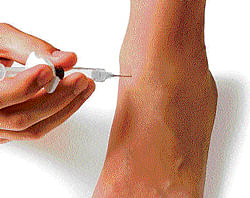
Women tend to suffer from brittle bones after the age of 40 but at times fragile bones can haunt them much before that too.
Absurd lifestyle comprising of smoking, drinking, laziness combined with our unhealthy, low-calcium diets are all signs of soaring osteoporosis. Most of our calcium stores decrease in our teens, 20s, and 30s. So it is important to maintain a healthy lifestyle during those years.
Osteoporosis affects the bone structure of a person and makes it weak. When we’re young, the body absorbs calcium more efficiently. But as the body ages, calcium reserves are depleted and this makes the bones weak.
Deficiency of calcium and vitamin D may lead to weaker bones. Women need to take proper care of bones with additional intake of calcium doses. “Calcium” has always been woman’s best friend in terms of bone health. Ladies should start thinking about their bones at an early age so that they don’t face bone problems later in life.
Vitamin D deficiency is also known as a ‘Disease of Neglect’. The deficiency of Vitamin D can pose serious threats. It is a fat-soluble vitamin that is best known for supporting absorption of calcium and phosphorous into the bloodstream, but it plays important roles in many other functions and influences the activity of perhaps 200 genes. Vitamin D is also called Sunlight Vitamin. Its importance has been emphasized in the western countries repeadtedly.
Even high levels of stress can make the body produce the hormone ‘cortisol’, which can cause bone loss. Young woman usually concentrate more on the looks and not on their health. This imposes threat on the health of the young ladies. They should start working smart by adding foods containing calcium and vitamin D in their regular diet for strong bone health.
Human beings require different amount of calcium and Vitamin D during different phases. An average adult requires 1000 IU/day while a pregnant woman requires 2000 IU/day and 4000 IU/day is required by a lactating mother. Whereas adults under the age group of 19-50 require 1000 mg/ day while those above the age of 51 require 1200 mg/day.
Vitamin D can be gained either through sun light or supplementation. The best time to receive sunlight is between 10am to 3pm-and the maximum production of vitamin takes place at that time. 90% Vitamin D production is through sunlight. 5-15 minutes of sunlight, 2-3 times per week is considered sufficient. Other sources of vitamin D are milk, mushroom, wild salmon, fish and vitamin-D supplements. Sources of calcium are yogurt, cheese, orange juice â• salmon, tofu and spinach. Obesity causes vitamin D deficiency because the requirement of vitamin D3 increases.
But how can one prevent bones from getting weak?
One should exercise daily, avoid smoking, avoid alcohol, eat foods rich in calcium and vitamin D and take calcium and vitamin D pills for supplement. People should follow a good lifestyle and should eat healthy. Women should consume at least 1,000 mg of calcium. They should opt for low-fat dairy such as semi-skimmed milk and yoghurt and bony fish such as tinned salmon and sardines.
Eating leafy green vegetables such as kale, broccoli and spinach are also beneficial. Dried fruits such as figs and currants and breakfast cereals fortified with calcium are also good sources. Vitamin D aids the body to absorb calcium. Oily fishes are our main source comes from the effect of sunlight on your skin. It's estimated that half of us have a deficiency because we sit indoors most of the time and most of the women use sun block creams and lotions.
(The writer is senior consultant orthopaedics)